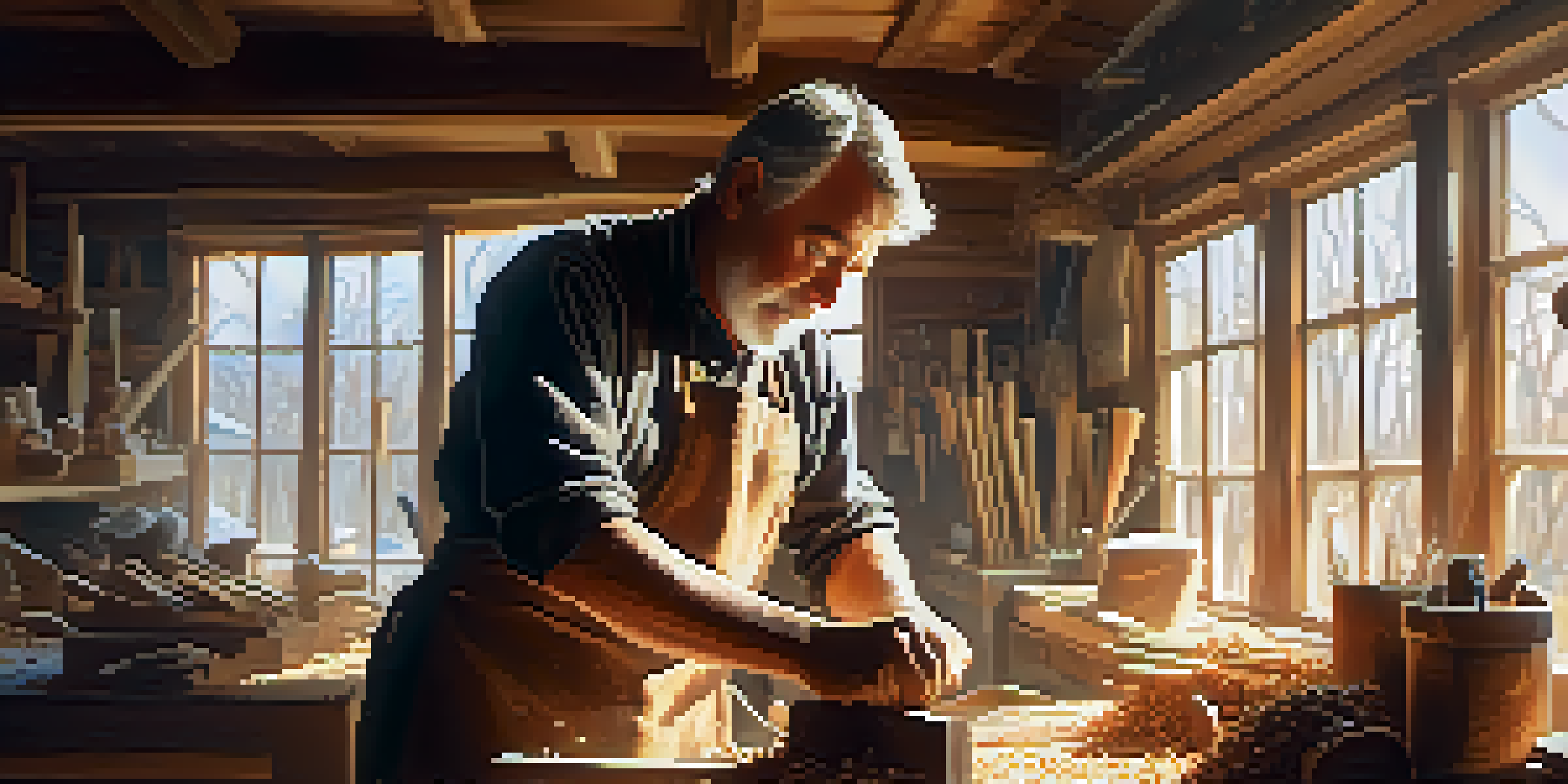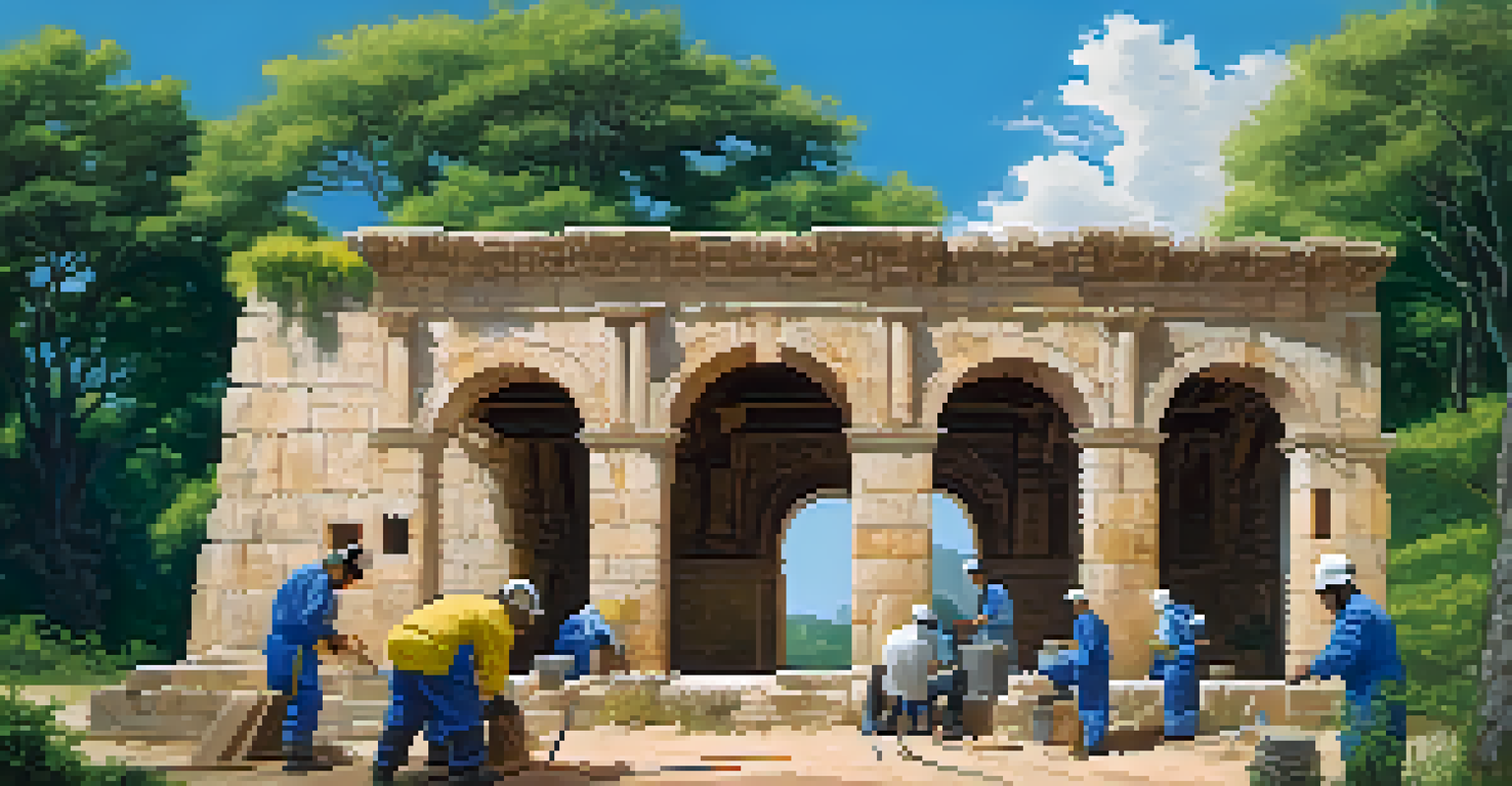Challenges in Carving for Historical Restoration Projects

Understanding Historical Carving Techniques and Materials
Historical restoration often requires a deep understanding of traditional carving techniques. Craftsmen must familiarize themselves with the specific methods used in the era of the artifact. This knowledge not only enhances authenticity but also ensures the integrity of the restoration process.
The past is never dead. It's not even past.
Additionally, the materials used in historical carvings play a crucial role. Each period had its preferred wood, stone, or other materials, which can affect the carving techniques employed. Knowing these subtleties helps modern restorers replicate the original work more accurately.
For example, the intricacies of Gothic architecture demand specific chiseling techniques that differ significantly from those used in Baroque styles. Without this understanding, restorers risk compromising the historical value of the pieces they work on.
Preserving Original Details While Carving
One of the primary challenges in carving for restoration is preserving the original details of the piece. Over time, wear and tear can obscure fine details, making it difficult for restorers to discern what needs to be replicated. This requires a keen eye and often a bit of detective work.

Restorers must balance the need to restore with the principle of minimal intervention. This means that while they may need to add or replace parts, they should do so in a way that complements the original without overshadowing it. It's a delicate dance between restoration and preservation.
Mastering Historical Carving Skills
Understanding traditional carving techniques and materials is essential for authentic historical restoration.
Using techniques such as digital scanning can aid in capturing the original details, allowing restorers to have a reference point. This modern approach, when combined with traditional skills, can lead to stunning results in historical restoration.
Navigating Legal and Ethical Considerations
Restoration projects often come with a host of legal and ethical challenges. It's essential for restorers to understand the regulations surrounding historical artifacts, as improper handling can lead to legal repercussions. This is particularly true for pieces that are considered national treasures.
Restoration is not just about the artifact; it’s about understanding the history that shaped it.
Ethics also play a significant role; restorers must consider the implications of their work. For instance, altering an artifact too much can misrepresent history and deceive future generations. It's crucial to strike a balance between restoring functionality and maintaining historical accuracy.
To navigate these complexities, many restorers consult with legal experts and adhere to established codes of ethics in the field. This ensures that their work honors the artifact's history while complying with legal standards.
Dealing with Limited Resources and Funding
Funding can often be a major hurdle in historical restoration projects. Many initiatives rely on grants, donations, or governmental support, which may not always be available. This can lead to cuts in materials or tools needed for quality carving.
When resources are limited, restorers must be innovative. They may need to source alternative materials or find creative solutions to achieve similar effects without compromising the restoration's integrity. This often requires a combination of traditional skills and modern ingenuity.
Balancing Restoration and Preservation
Restorers must preserve original details while minimizing intervention to maintain historical integrity.
For instance, using reclaimed wood instead of new materials can provide both a cost-effective solution and an authentic touch. This approach not only saves money but also aligns with sustainable practices, benefiting both the project and the environment.
The Impact of Weather and Environmental Factors
Environmental conditions can greatly affect both the materials and the restoration process itself. Factors such as humidity, temperature, and exposure to the elements can cause wood to warp or stone to erode, complicating the carving process. Understanding these impacts is vital for any restorer.
To combat these challenges, restorers often work in controlled environments when possible. This helps maintain optimal conditions for the materials they are working with, leading to more successful outcomes. However, this is not always feasible, especially for large-scale projects.
As a result, restorers must adapt their techniques based on the current environmental conditions. This adaptability is essential in ensuring that the restoration remains true to the original, despite the challenges presented by nature.
Skill Gaps and Training for Modern Restorers
With the rise of technology and changing educational trends, there can be skill gaps in the field of historical restoration. Many new restorers may not have the hands-on experience necessary to tackle intricate carving projects. This can lead to inconsistencies in restoration quality.
To bridge these gaps, mentorship programs and workshops are essential. Experienced artisans can pass on their knowledge and techniques to the next generation, ensuring that the craft of historical carving remains alive and well. These opportunities also foster a community of restoration experts who can collaborate on projects.
Collaboration Enhances Restoration
Interdisciplinary teamwork and modern technology are crucial for achieving high-quality historical restorations.
Moreover, online resources and courses have become invaluable for those wishing to hone their skills. By combining traditional training with modern educational tools, aspiring restorers can develop a well-rounded skill set that prepares them for the challenges of historical restoration.
Collaborating with Other Disciplines in Restoration
Collaboration is key in historical restoration projects, as they often require input from various fields. Architects, historians, and even chemists may need to work alongside carvers to ensure a comprehensive restoration approach. This interdisciplinary teamwork enhances the overall quality and authenticity of the project.
For example, a historian might provide insights into the original context of the artifact, guiding carvers in their approach. Meanwhile, architects can offer structural advice, ensuring that the restoration supports the integrity of the building or piece. This collaborative spirit can lead to remarkable results.

Additionally, technology plays a significant role in fostering collaboration. Virtual meetings and shared platforms allow professionals from different disciplines to communicate effectively, regardless of their physical locations. This synergy not only enriches the restoration process but also helps preserve historical integrity.